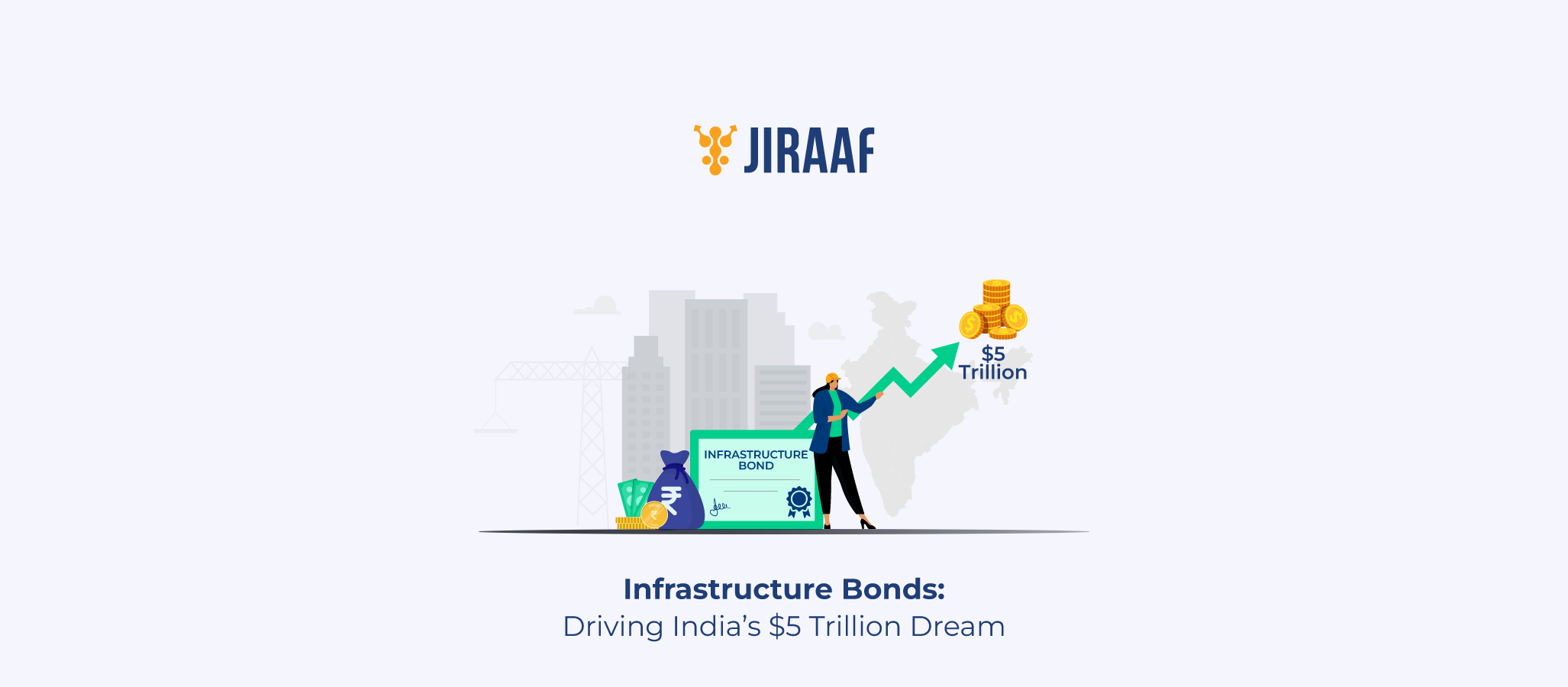Infrastructure serves as the backbone of a nation, underpinning economic growth by facilitating trade, investment, and employment. From major metropolitan hubs like Bengaluru, Mumbai, and Hyderabad to emerging manufacturing centres in Tier 2 cities, infrastructure is essential to the functioning and expansion of businesses across the country.
India has set ambitious targets – transforming into a $30 trillion economy by 2047, developing 100 smart cities, and achieving seamless multimodal connectivity. However, these aspirations are hindered by a significant infrastructure financing gap, estimated at over 5% of the nation’s GDP.
While public investment has seen a notable rise – central government expenditure on infrastructure has more than doubled between FY21 and FY24 – private capital remains significantly underutilized. Institutional investors, such as pension and insurance funds, currently allocate only 6% of their assets to infrastructure. To realize its long-term development goals, India must catalyse greater private sector participation. Without it, the nation risks falling short of its transformative vision.
What Are Infrastructure Bonds?
Infrastructure bonds are long-term debt instruments issued by governments, government-backed entities, or corporations to raise capital specifically for financing infrastructure projects such as roads, railways, power plants, and urban development. These bonds typically offer fixed interest returns over a defined period and may come with tax benefits, especially when issued by public sector undertakings. While considered relatively low-risk when backed by the government, private infrastructure bonds may carry higher credit risk. They are particularly attractive to institutional investors like pension and insurance funds due to their stable, long-term returns, and play a crucial role in bridging the infrastructure financing gap in countries like India.
How Are Infrastructure Bonds Structured?
Infrastructure bonds are structured as long-term debt instruments designed to raise capital specifically for funding infrastructure projects such as roads, railways, power, and urban development. These bonds can be issued by the government, public sector enterprises, or private infrastructure companies. Structurally, they may be either secured or unsecured and are typically issued with a fixed interest rate (coupon) and a defined maturity period, usually ranging from 5 to 20 years.
The repayment of interest is done periodically (annually, quarterly or semi-annually) while the principal is repaid at maturity. In some cases, bonds may have call or put options, allowing early redemption under certain conditions. These bonds can also be structured as tax-free or tax saving bonds, offering tax exemptions on interest income under specific government schemes or deduction from overall income levels.
In project financing, infrastructure bonds may be backed by the cash flows of the underlying project (like toll revenues or utility payments), or by guarantees from the issuing entity. Some bonds are listed on stock exchanges, enhancing liquidity for investors. Institutional investors such as pension funds and insurance companies are key participants due to the long tenure and stable returns. The structure is tailored to match the long gestation periods and capital intensity typical of infrastructure projects.
Types of Infrastructure Bonds
Considering that infrastructure forms the foundation of all economic activity, the government supports investors, individuals and institutions, by offering tax-saving and tax-free investment options in infrastructure bonds. Broadly, infrastructure bonds can be categorized as follows:
Tax Saver Bonds: Tax saver bonds are a type of infrastructure bond that allows investors to reduce their taxable income up to a specified limit, thereby lowering their overall tax liability. However, the interest earned on these bonds is treated as income and is taxable according to the investor’s applicable income tax slab.
Tax-free Bonds: Tax-free infrastructure bonds are bonds that are generally issued by government or its agencies like municipal corporations or PSUs. Tax-free bonds typically have a longer tenure and can range anywhere between 10 years to 20 years. The most important aspect of tax-free bonds is that the interest earned on tax-free bonds is completely exempt from tax, i.e., it does not form a part of investor’s taxable income.
Zero-coupon Infrastructure Bonds: Zero-coupon bonds are issued by infrastructure companies or government agencies at a discount and redeemed at face value upon maturity. The difference between the purchase price and the redemption value represents the investor’s earnings. Depending on whether these bonds are officially notified as zero-coupon bonds by the Central Board of Direct Taxes (CBDT), the income (or value appreciation) may be taxed either as capital gains or as interest income.
Tax Considerations
As stated above, taxation of infrastructure bonds varies based on the type of issue and its overall structure. India, being a developing economy, heavily invests in infrastructure projects to attract investments and drive growth. Accordingly, the government issues infrastructure bonds as one of the means to raise funds for such projects. In order to attract investments for infrastructure projects, there are certain regulations introduced in the Income Tax Act, 1956 through which certain tax benefits are made available to investors for investing in certain specified infrastructure bonds.
Section 10 of the Income Tax Act deals with tax-free bonds. Under this section, the interest income earned is completely exempt from tax and does not form a part of investor’s taxable income. On the other hand, taxation Section 80 CCF deals with tax-saver infrastructure bonds. Investment in bonds covered u/s 80 CCF allows investors to claim deduction up to ₹20,000 from overall taxable income. In essence, investing in tax-saver bonds brings down the net taxable income level.
In case of zero-coupon infrastructure bonds, it is paramount to check if the instrument is notified by CBDT u/s 2(48) of Income Tax Act. The gains realized on notified zero-coupon bonds are taxed as long-term or short-term capital gains based on the period of holding and in case of non-notified zero-coupon bonds, the difference between the investment amount and redemption value is taxed as interest income as per the slab rates.
Benefits of Investing in Infrastructure Bonds
- Steady Returns: Infrastructure bond provides stable and steady returns over its tenure. This helps generate regular cashflows for investors.
- Longer Tenure: Infrastructure bonds offer longer tenure considering the money is used for long term infrastructure projects. This aids in reducing reinvestment risk and establishes more predictable returns.
- Sovereign Backed: Infrastructure bonds are generally backed by the state government, central government or its agencies based on where the projects are being undertaken. Accordingly, these bonds are supported by the government which makes them highly safe and reliable.
- Contribution to Nation’s Growth: Infrastructure bonds allow investors to not only generate regular income but also contribute to nation’s infrastructure development indirectly.
- Tax Benefits: Investment in Infrastructure bonds makes investors eligible to claim tax deduction under Section 80 CCF of Income Tax Act as per the specified.
Risks Involved
- Project Delays: Funds raised through infrastructure bonds are utilized for development or constructure of assets like roads, railways, bridges, dams, etc. Such projects are generally prone to disruption or delays that affect investors’ cashflows.
- Liquidity Risk: Infrastructure bonds are generally traded between treasuries of various institutional investors. For a retail investor it might be a challenge to sell these securities before maturity.
- Interest Rate Risk: Infrastructure bonds typically carry tenure upwards of 10 years. Any interest rate changes will more severely impact the prices of infrastructure bonds over other short tenured bonds.
Why Consider Investing in Infrastructure Bonds?
With India’s infrastructure sector poised for significant expansion, driven by government initiatives and increasing private participation, the demand for infrastructure financing is set to rise steadily over the coming years. In this context, infrastructure bonds are emerging as a compelling investment avenue for those seeking stable and predictable cash flows.
For risk-averse investors, infrastructure bonds offer a relatively secure investment option, especially those backed by a sovereign guarantee. The government backing enhances the creditworthiness of these instruments, thereby reducing the default risk and ensuring consistent interest payments. Additionally, certain infrastructure bonds also provide tax benefits under Section 80CCF of the Income Tax Act, further improving their attractiveness as a fixed income instrument.
Overall, infrastructure bonds present a prudent opportunity for investors aiming to align their portfolios with India’s growth story while maintaining a conservative risk profile.
Conclusion
Infrastructure development has a powerful multiplier effect – enhancing transportation efficiency, stimulating demand, and unlocking new commercial and entrepreneurial opportunities. According to a report by Morgan Stanley, India’s infrastructure investment is projected to rise from 5.3% of GDP in FY24 to 6.5% by FY29, reflecting the country’s strategic focus on long-term economic growth.
As India aspires to become a $5 trillion economy, a robust pipeline of infrastructure projects is anticipated across sectors such as transportation, energy, urban development, and digital connectivity. This creates a significant opportunity for investors to participate in the nation’s growth journey. By investing in infrastructure-linked instruments, investors not only support nation-building but also benefit from the potential for regular, stable income.
Discover fixed income investments with Jiraaf, a SEBI registered online bonds platform that educates and brings access to a wide array of bonds. Sign up today to explore diversified fixed income investment opportunities to support your goal-based wealth creation journey. Start investing!









